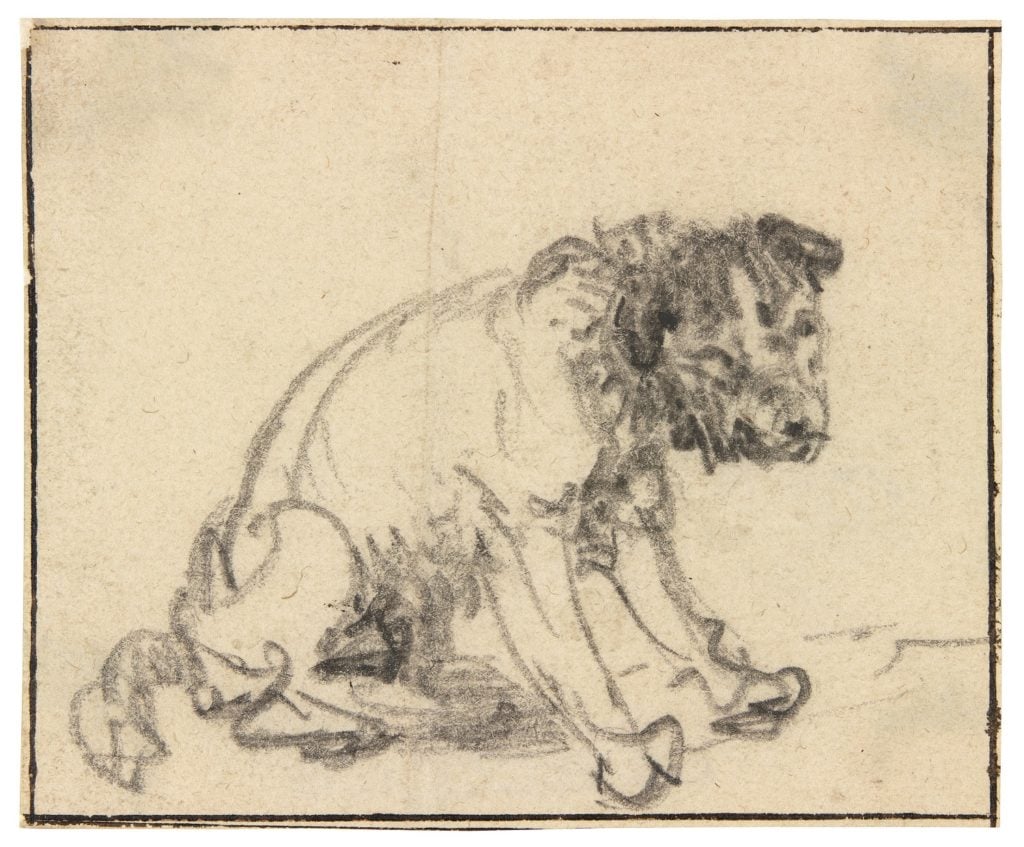Art World
German Museum Authenticates Rembrandt Drawing Hidden in its Collection for 250 Years
The work had been misattributed to a different Baroque painter.

The work had been misattributed to a different Baroque painter.

Amah-Rose Abrams

A museum in Northern Germany has announced the discovery of a drawing by Dutch Master Rembrandt van Rijn which had lain, misattributed to Johann Melchior Roos, in its collection for almost 250 years.
The drawing, a small pencil sketch of a dog, was discovered at the Herzog Anton Ulrich Museum in Braunschweig, by the head of the drawing department, Prof. Dr. Thomas Döring. He made the realization while the department was digitizing its collection.
“I realized that it must be by Rembrandt when we were cataloging by inventory number. Looking at the drawing out of context I realized this was a Rembrandt drawing,” Dr. Döring told artnet News over the phone.
The work is unusual for a Rembrandt as he rarely depicted animals in his work. It remained undiscovered because it was stored with Baroque animal drawings by the Roos family. According to Dr. Döring, the Roos family were so prolific in Baroque animal drawing that if a museum couldn’t attribute such a drawing, it might automatically be filed as a Roos—especially at the Herzog Anton Ulrich Museum, as the family has strong links with Braunschweig.
Despite being viewed by many Old Master and Rembrandt specialists over the years, no one else spotted the work’s true authorship. It was only when looking at the work away from these other, similar, drawings that Dr. Döring saw the Rembrandt for what it really was.
”There is a moment when you look at it and you realize this is an outstanding masterpiece, I knew it must be a Rembrandt, but I didn’t know if it would be possible for me to prove it, or if it would be accepted,” he explained.
Dr. Döring’s discovery was made two years ago, and from that moment the path to the work being attributed to the Dutch Master by the experts began.
One attribution came from Dr. Holm Bevers, Chief Curator for Dutch and Flemish Prints and Drawings at the Kupferstichkabinett of the Staatliche Museen zu Berlin in Berlin, and then came the second nod of approval from Pieter Roelofs, curator of seventeenth-century Dutch painting at the Rijksmuseum in Amsterdam. The third came from an Old Master specialist at the British Museum in London. Dr. Döring was astonished at how little argument there was to the work being a genuine one by the beloved master painter.
Those curious about the work can see it when the museum opens its first major exhibition since re-opening after refurbishment in October 2016, “Dürer, Cézanne, and Me: How Masters Draw,” at the Herzog Anton Ulrich Museum in Braunschweig opens on April 6 and runs until July 7, 2017.